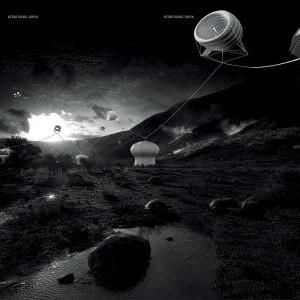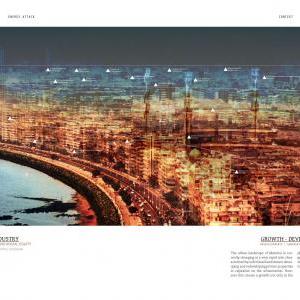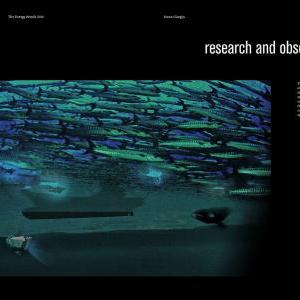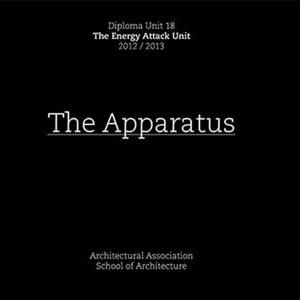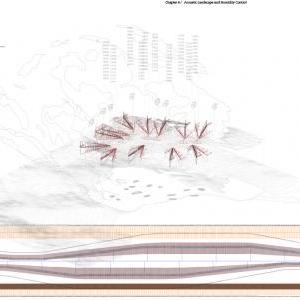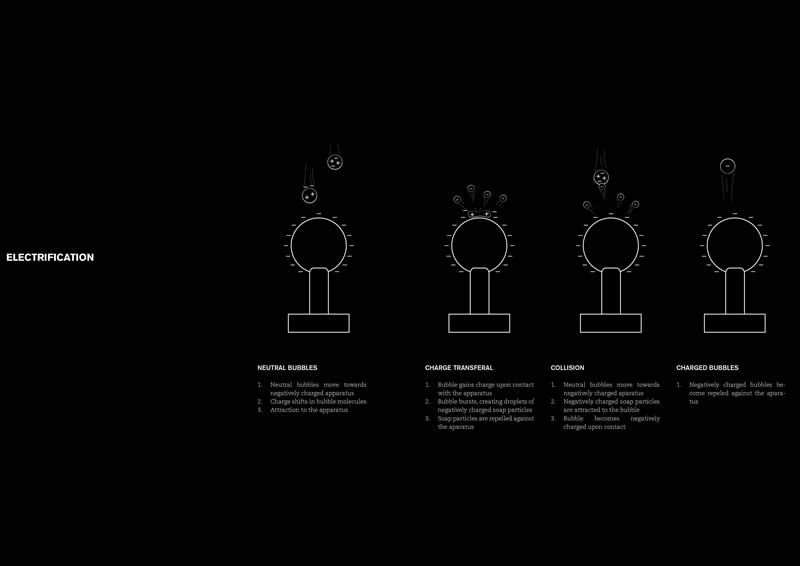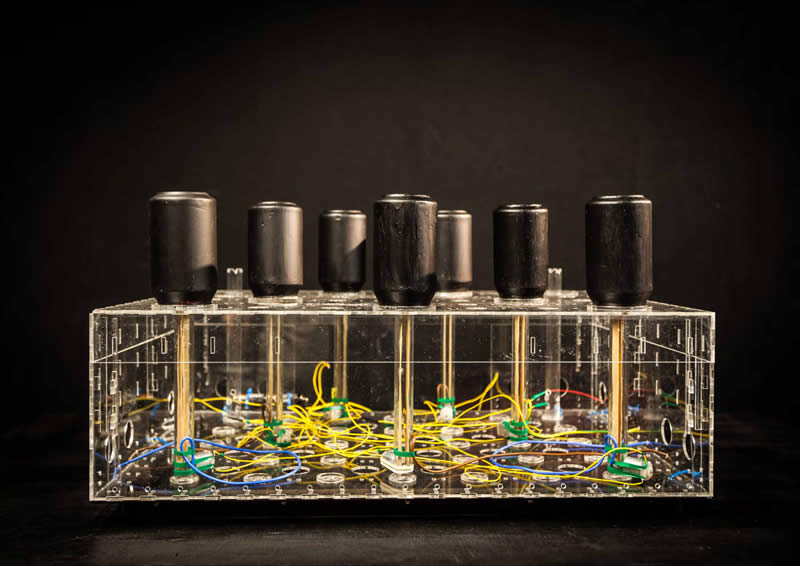After two years of focusing on the exploration of global warming related to problematic scenarios, Diploma 18 took this year to dive into the exceptional ecosystem of the Galapagos Islands. This environment, where nature dominates, served our unit as a live laboratory for studying an apparently virgin system. To work in this context, the unit explored the lightest buildings to date, gaining knowledge of membrane materials and inflatable structures, which allowed
us to delve into science and fiction. This extended our long-term relationship with artist Pep Bou, who exposed us to the world of bubbles, form, ephemerality and ambient conditions of humidity or light while examining the phenomenon of physics. We also studied computational dynamics that mimic and simulate animal behaviours of local species in the lead up to our visit to the Galapagos. The expedition to the archipelago was an occasion for us to understand a context that lives according to the rhythms of nature, but is thoroughly organised as an ecosystem in which man is irremediably implicated through political dynamics, social actions, scientific research and environmental threats.
The projects that unfold from this confront the Galapagos and other regions of the world. They propose empathic solutions from infrastructural to molecular scale, and they attempt to raise a green consciousness in architecture.
Protocol Island – learning from animal species and their self-sufficient character
Light Trails – an exploration of coastal maritime environments that target illegal fishing
@ekwti – an empathic attack on the urban fabric of Kuwait propagated on Instagram the Schizophonic Retreats – explorations into the materiality of sound
Scavenging Celebration – a shift in organisation of communities of the River Citarum Cloud Inhabitant – acoustic condensation system in Peru
Galapagoisation – artificial aerial river for the Galapagos Islands
Degrowth Industry – shifting electromagnetism, facilitating ecological rehabilitation
Educating in Nature – a new pedagogical model that instrumentalises nature
Unit Staff
Enric Ruiz Geli
Edouard Cabay
Pablo Ros
Workshops with
Pep Bou
Mara Sylvester
Thomas Koetz
Guest Critics
Nuria Alvarez Lombardero
Alisa Andrasek
Peter Karl Becher
Eric de Broche
des Combes
Francisco Gonzalez de Canales
Javier Castañón
Ray Hall
Ali Mangera
Nacho Martí
Jesús de la Quintana
Areti Markopoulou
Adrian Priest
Theodore Spyropoulos
Brett Steele
Marco Vanucci
Ada Yvars
Sarvenaz Yassari
1- The mechanical forces are introduced by electric motors. The turning belt generates static electricity through friction.
The metallic units act as capacitors, storing the electrostatic forces abundant in our daily encounters.
An invisible boundary is created between the apparatus and the ephemeral bubbles. Their fragility renders any interaction destructive.
A multitude of electrons working collectively results in the control of these fragile structures.
The Apparatus becomes a physical manifestation of the interacting forces.
The apparatus is always inscribed into a play of power, but it is also linked to certain limits of knowledge that arise from it and, to an equal degree, condition it.
2- There exists two stories between the spiders of Galapagos, it’s a battle between Argiope Argentata, the host, and Dewdrop spider as the intruder.
The intruder abuses the web in the first story. They are chased away by the host and rapidly rejected by the system.
In the second story, the presence of intruder forces the host to regenerate its webs. The constant battle between these two creates a transforming landscape.
he existence of the intruder becomes essential for the host to create alternative solutions.
Here, the intruder no longer bears the negative connotation of an enemy, since it becomes the source of innovation and harmony.
3- Conservation Ethics Through Education
How are the youth of Galapagos being prepared to be involved in Galapagos
Conservation?
Local community of Galapagos have not been properly prepared to take an
active role in conservation in Galapagos. If we think about conservation and
sustainability that is the goal of galapagos in the long term. First of all at least
some academic skills are required in order to find the jobs locally. However that
is not the case at the moment. Unfortunately most of the time people should
come from outside Galapagos to fill those jobs. Either because they don’t have
the skills or they don’t know the language. Also the personal skills are actually
not there. Basically because when we think about education we need to find a
different way of conceiving the world also different way of thinking about
development.
The goal is to train the people to implement things that are coherent with the model to have human resource as an effective source of energy in long term.

